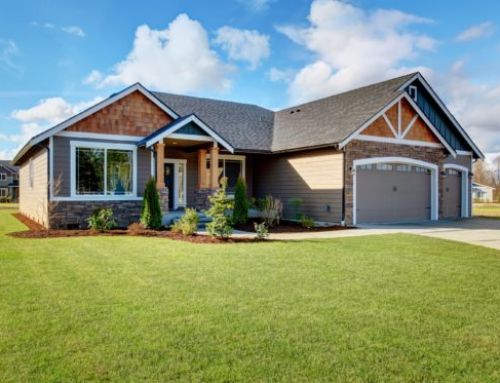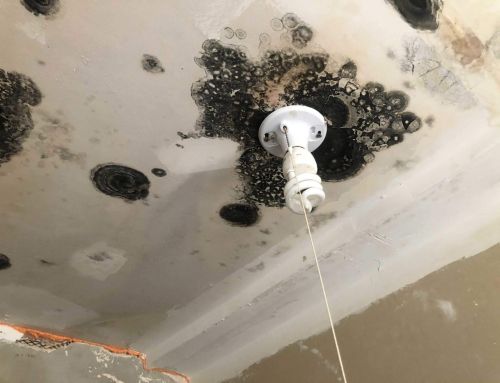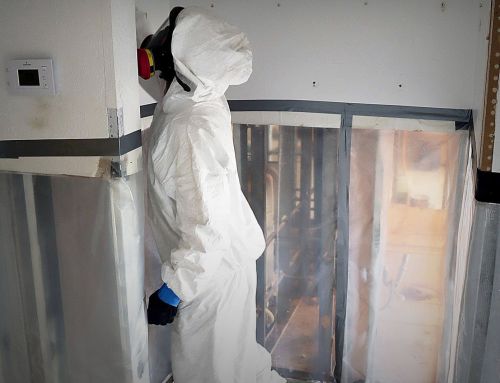Hurricanes are powerful natural disasters that can cause extensive damage to homes and buildings. While the immediate destruction caused by high winds and flooding is often the most visible, there are also hidden dangers that arise in the aftermath of a hurricane. One of these dangers is the growth of mold within homes and buildings that have been affected by the storm. Mold flourishes in damp, humid environments, and the moisture and water damage caused by hurricanes can create the perfect conditions for this toxic substance to grow. If left untreated, mold leads to a range of health problems for residents, making it important to take steps to prevent and address mold growth after a hurricane.
How Mold Growth Develops After a Hurricane
Mold starts to develop and grow in homes after a hurricane due to the presence of moisture and water damage caused by the storm. Hurricanes bring heavy rain, flooding, and high levels of humidity, which create damp conditions that are conducive to mold growth. If water enters your home through leaks in the roof or walls, or if floodwaters enter the home, standing water and excess moisture create high humidity conditions and warmth that lead to mold growth. If your home is not properly dried out after a catastrophic weather event, mold spores will spread quickly throughout a home, overtaking your living spaces and potentially making them uninhabitable.
Potential Issues Associated With Excessive Mold Growth
Excessive mold growth in a home leads to a wide range of structural issues that will eventually compromise the safety and integrity of the building. Mold feeds on organic materials like wood and drywall; over time, this weakens the structural integrity of these materials, leading to sagging floors, warped walls, and even structural collapse.
Mold also loves to grow within insulation, causing it to become saturated with moisture and very ineffective at regulating temperatures and preventing moisture buildup. This leads to increased energy costs and potential mold growth in other areas of the home.
Mold spores can easily spread through air ducts and HVAC systems, potentially causing damage to these systems and leading to decreased indoor air quality. In extreme cases of infestation, mold also grows on personal property such as furniture, clothing, and electronics, leading to permanent and irreversible damage.
Excessive mold growth can compromise the safety and livability of your home, making it essential to address its growth promptly and thoroughly.
Health Consequences of Mold Growth in Your Home
Excessive mold exposure can lead to a range of health consequences, particularly for individuals with pre-existing respiratory conditions or weakened immune systems. Some of the potential health effects of mold exposure include:
- Respiratory issues
- Allergic reactions
- Skin irritation
- Headaches
- Fatigue
- Immune system suppression
Exposure to mold spores irritates the respiratory system, leading to symptoms such as coughing, wheezing, and shortness of breath. Those with asthma or other respiratory conditions may experience worsened symptoms when exposed to mold. Mold spores can trigger allergic reactions in some individuals, leading to symptoms such as sneezing, runny nose, and itchy eyes. Direct contact with mold can cause skin irritation, including redness, itching, and rash. Exposure to mold can also lead to general feelings of malaise, including headaches and fatigue. Over time, prolonged exposure to high levels of mold can weaken the immune system, leading to increased susceptibility to other illnesses and autoimmune conditions.
Preventing Mold After a Hurricane
Though it may not be easy to gain access to your property after a storm, the sooner you can begin the cleanup process, the better. It’s important to assess your home and property for potential safety hazards as you return or begin to clean, particularly if you don’t have power in your area. Do what you can as you begin to power back up, and take these steps to prevent mold and mildew growth from taking over your home.
Dry Out Affected Areas
As soon as you are able, dry out affected areas of your home and property to prevent mold growth. Mold and mildew can begin to grow in warm, moist areas in under 24 hours, so time is of the essence when taking steps to reclaim your home. Use fans, dehumidifiers, and open windows to help speed up the drying process.
Remove Wet Materials
It’s essential to remove wet materials like carpets, furniture, insulation, drapes, and even clothing to keep your home as dry as possible. These materials should be aired out, dried, and cleaned thoroughly to reduce the likelihood of mold growth and spore transfer to other surfaces in your home.
Clean and Disinfect Everything
Use a solution of one part bleach to 10 parts water to clean and disinfect any surfaces that have come into contact with floodwater or excess moisture. This can help to kill mold spores and prevent further growth. Hard and fabric surfaces alike should be tended to in order to give you the most comprehensive cleaning and eradication of potential debris that could lead to mold and mildew infestation.
Improve Ventilation
Open windows and use fans to increase airflow and reduce humidity in the affected area. Even in areas with high heat and humidity, a little fresh air and movement will be preferable to a home that is shut up tight. Do not attempt to run your HVAC system again until your home has been adequately aired and cleaned to prevent mold spores from circulating through your home via your ductwork.
Continue to Monitor for Signs of Mold
Keep an eye out for signs of mold growth, such as a musty smell or visible mold on surfaces. If you notice any signs of mold growth, address it promptly to prevent further spread. The process of cleaning up after a storm could take months, even years to prevent mold from taking hold. Regular cleaning of your home and maintenance of your HVAC system should minimize the likelihood that you’ll be taken over by toxic growth.
Call in Professionals if Needed
If the mold growth is extensive or difficult to remove, it may be necessary to consult a professional mold remediation service to safely and effectively address the problem. Professional mold remediation services are performed by highly trained professionals with proper tools and equipment; their use of specialized treatments and procedures ensures that your home is swiftly and efficiently cleaned, leaving you free from mold and spores that can become mold. Dealing with a hurricane cleanup is an extensive and stressful process; calling in a professional to handle mold safely and efficiently will give you peace of mind that your home can once again be reclaimed by you.
Let’s Help You Get Cleaned Up!
At Pur360, we have been providing Hurricane cleanup solutions for our valued customers since 2006. We are committed to offering outstanding mold remediation, testing, and sanitization services that will help you get back into your home after the storm. Assisting both residential and commercial customers in multiple states, we use our professional service and expertise to restore safety and comfort to your home once more. In addition to mold services, we can help with odor removal, carpet and drywall removal, attic stain removal, and light painting work following a storm. Contact us now for more information on our exceptional services.



